Router glossaryS-Z |
||||
 |
||||
S |
||||
 |
Sacrificial Support / Sacrificial work padA piece of material you don't mind wasting. Usually refers to a waste batten clamped onto the work that is cut into to prevent break-out at the end of a cut, or a waste board placed under the work. |
|||
 |
ScallopTo scallop a material is to decorate the surface with a series of regularly spaced circular scoops. |
|||
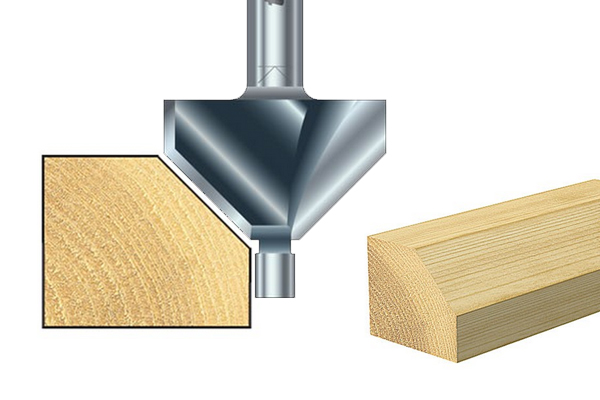 |
Self-guiding cuttersA self-guiding cutter has a ball bearing or pin guide which rides against the edge of a workpiece or template to limit the cutter's horizontal depth of cut. |
|||
 |
ShankThe shank is the cylindrical portion of the router cutter that is clamped into the router and held there by the collet. |
|||
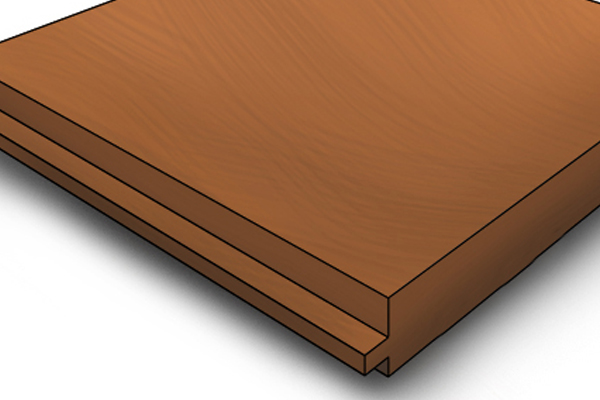 |
Shoulder cutThe shoulder cut is the one made across the grain on a joint such as a tenon or lap joints. |
|||
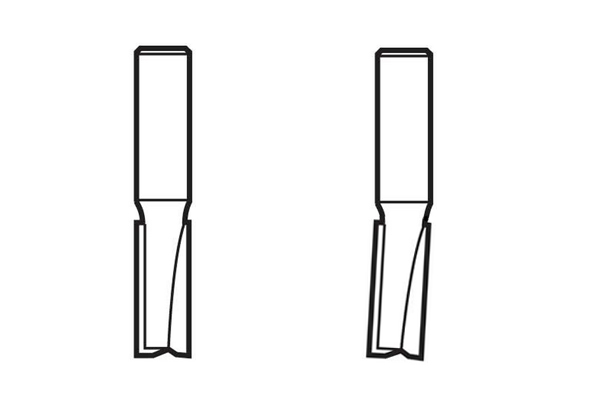 |
Side deflectionSide deflection is a term used to describe when the router cutter bends or flexes sideways while in use. It can occur as a result of high speeds and the motion of the cutter meeting the material. Cutters with smaller shanks are more susceptible to side deflection because they are inherently weaker than those with larger shanks. |
|||
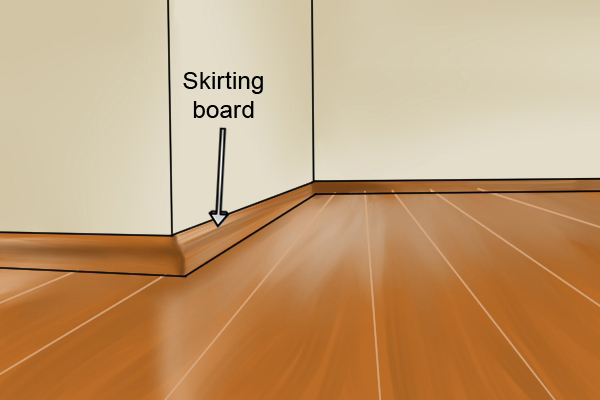 |
Skirting boardSkirting boards, also called baseboards, base rails, base moulding, and skirt moulding, are the most commonly used kind of moulding today. They are fixed to the base of a wall to cover the joint between floor and wall, and protect the bases of walls from furniture damage, scuffing, and other wear. There are moulding router cutters which can be used to produce decorative profiles for skirting boards. |
|||
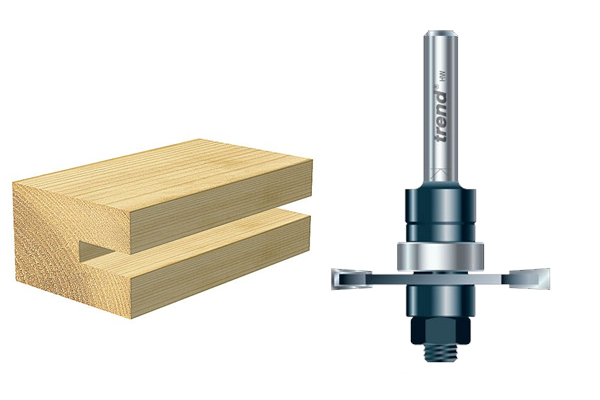 |
SlotterA slotter is another term for a cutter, often with a bearing guide, that is designed to produce slots in timber. An example of a common slotting cutter is an arbor-mounted biscuit jointer cutter. |
|||
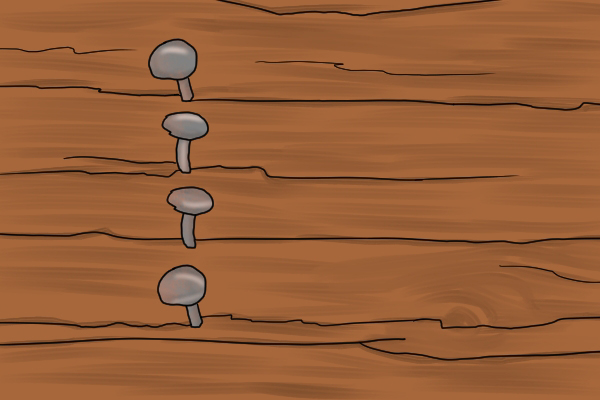 |
SnatchingSnatching, in routing, is when the revolving router cutter picks up the workpiece and tries to throw it sideways. It can occur if the cutter hits a foreign item in the material such as a nail or knot, or can result from the cutter revolving too slowly as it contacts the workpiece. |
|||
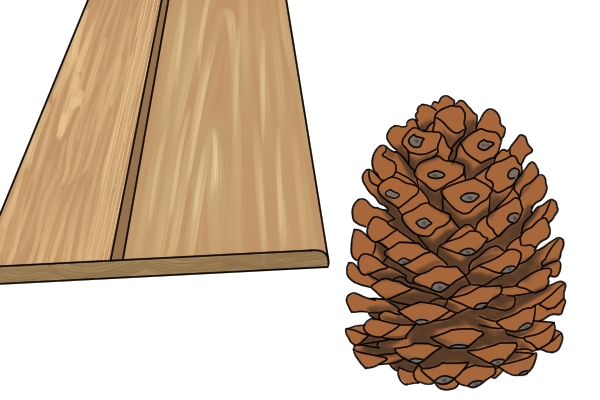 |
SoftwoodSoftwood is derived from coniferous or needle-leaved trees such as pine, spruce and cedar; however, the term is also used to describe the physical hardness of various woods with low-to-medium impact resistance. |
|||
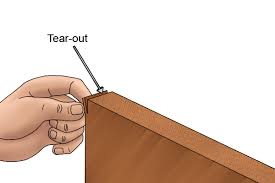 |
SpelchingSpelching, also known as "tear-out" is damage at the end of a cut where the unsupported grain of wood breaks away. |
|||
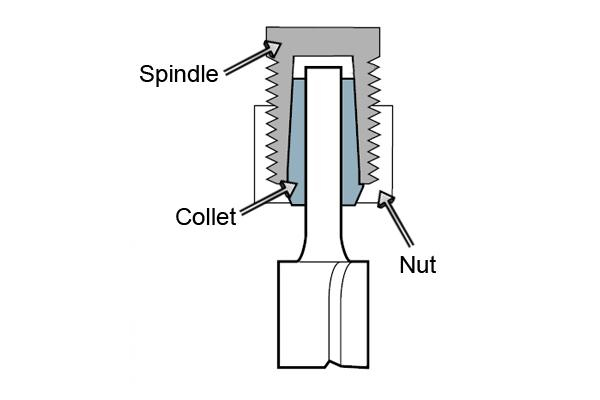 |
SpindleThe spindle is the main shaft of a router or spindle moulder and houses the collet on one end. |
|||
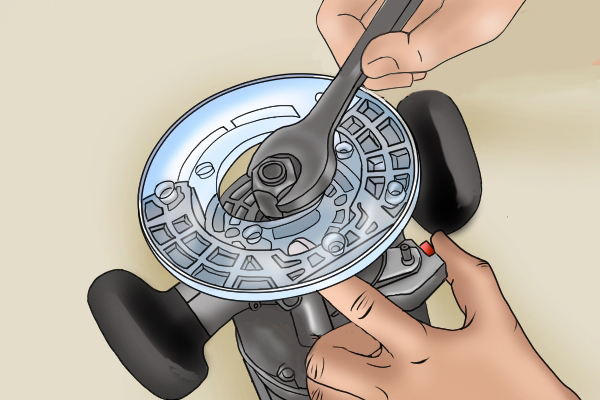 |
Spindle lockA spindle lock is a device that prevents rotation of the router spindle while installing or changing cutters. Once spindle lock is enabled, only one spanner or wrench is needed to engage the collet nut. |
|||
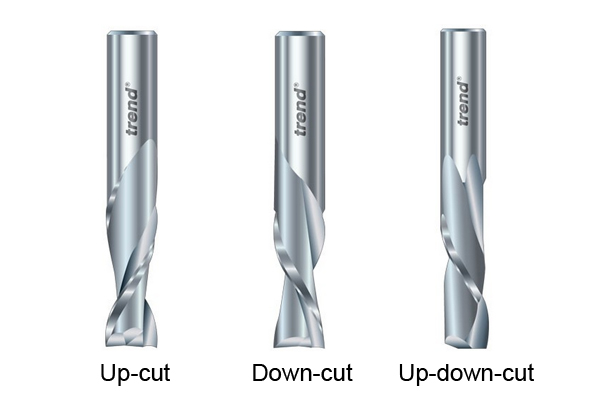 |
Spiral cutterA spiral cutter has its flutes arranged in a helical position around the body. There are various different flute designs available including left-hand or right-hand fluting. |
|||
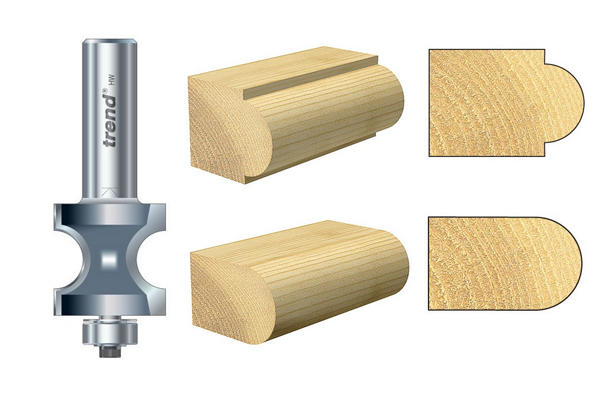 |
Staff beadThis is a bead with a quirk at each side; however, it can also refer to a beaded strip which holds a sash window in place. |
|||
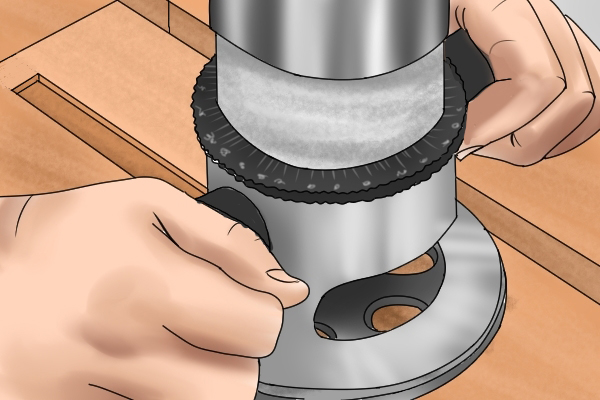 |
Stopped housingUnlike a regular housing, a stopped one does not run across the full width of a panel or workpiece. |
|||
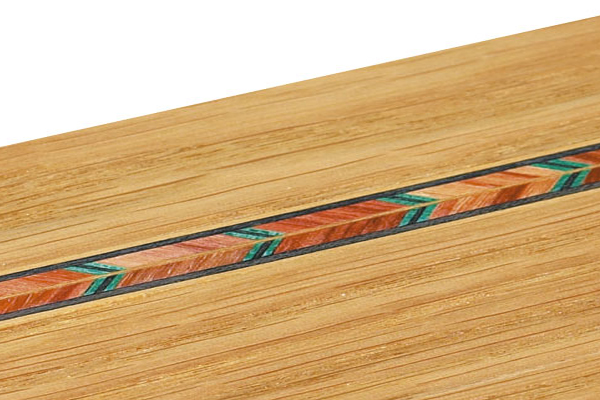 |
StringingsStringings are decorative inlays that usually come in the form of fine lines. A small diameter straight router cutter is often used to rout the grooves into which stringings are inserted. |
|||
 |
Stub-tenonA stub-tenon is a tenon that is shorter than the mortised timber is wide. This means that when the two are joined, the stub-tenon does not go all the way through the material and show on the other side, as opposed to with a through tenon. |
|||
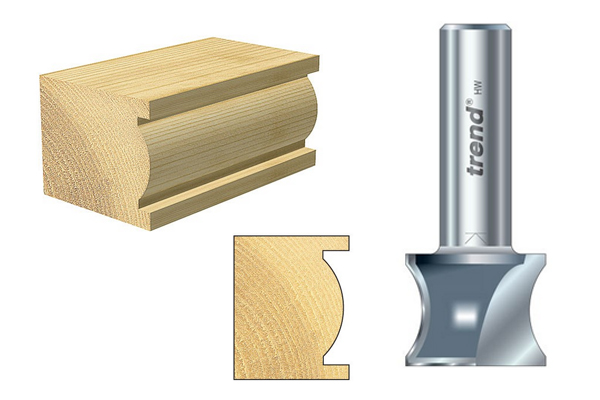 |
Sunk beadThis is a bead that is sunk below the surface of a workpiece. Sunk beads are commonly used to produce decorative edges and faces on furniture frames. Various sunk bead cutters are available. |
|||
 |
Sub-baseA secondary additional base fitted under the base of the router. This may be introduced to increase bearing surface, or provide a means of guiding the router in various ways. |
|||
T |
||||
 |
T-halving jointA joint where one member crosses the middle of another at right angles with material being removed from both pieces so that the surfaces finish flush. |
|||
 |
Tear-outTear-out refers to the damage done to a material when a tool breaks or leaves its surface. This damage can be in the form of torn or splintered fibres, large chunks of material being gouged away, or a generally ragged and messy edge. Tear-out usually occurs because the material being cut is not sufficiently supported, but there may be other factors to consider as well. |
|||
 |
TemplateA template is a predetermined shape that acts as a guide for cutting workpieces using a router and either a guide bush or bearing. Complex templates used for routing are often called jigs. |
|||
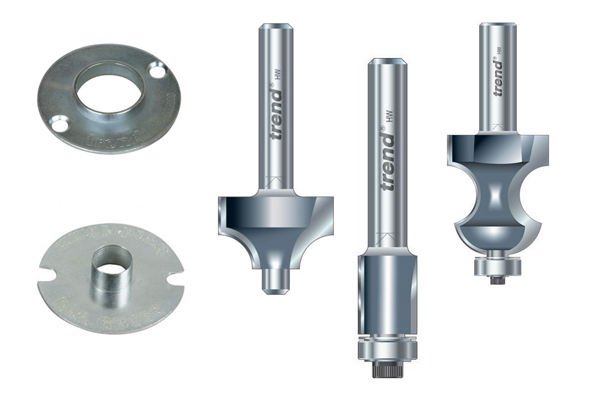 |
Template-following guidesThis is a collective term to describe guide bushes and self-guiding cutters - both of which are used to guide the router around a predetermined template, edge, or another shape. |
|||
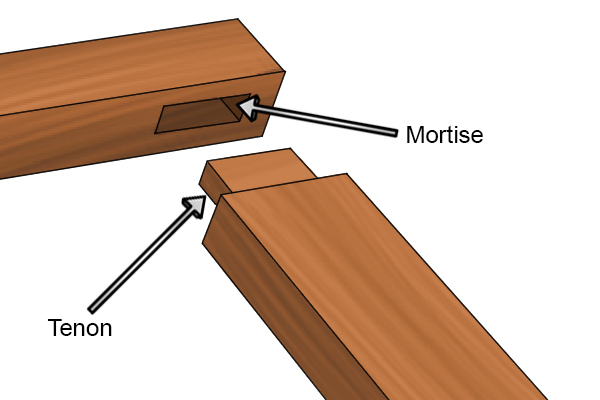 |
TenonA tenon is a projecting shape cut into the end of a piece of timber and designed to fit into a corresponding hole, known as a mortise, on another piece of material. When fitted, the two form a mortise and tenon joint. |
|||
 |
Tensile strengthTensile strength is the amount of stress that a material can take without breaking, snapping or tearing. A material with high tensile strength can withstand a high degree of stress (such as bending) without failing, whereas one with low tensile strength will break easily when stress is applied. |
|||
 |
Through dovetail jointA through dovetail is a right-angled joint where the pins and tails of the joint are exposed on both faces (as opposed to a "full-blind dovetail"). |
|||
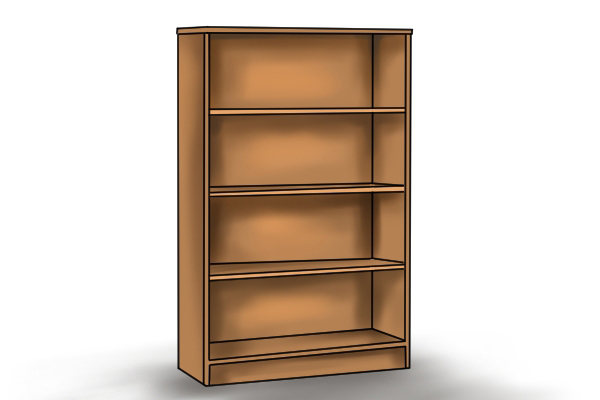 |
Through housingA "through housing", as opposed to a" stopped housing", runs all the way across the width of a workpiece to receive, for example, a shelf, or panel. |
|||
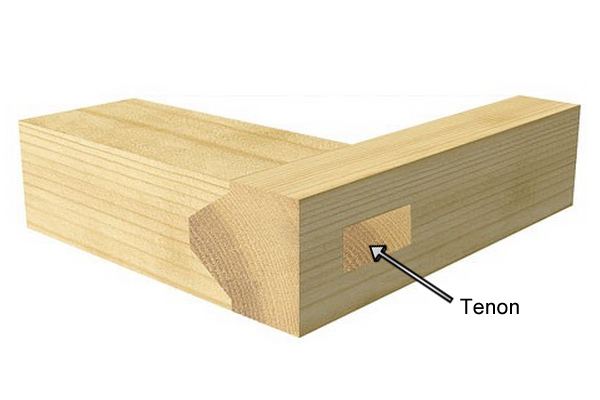 |
Through tenonA "through tenon", unlike a "stub-tenon", is long enough that when it joins with the mortise it is visible on the other side. |
|||
 |
Tongue-and-groove jointThis joint involves a protruding section (known as a tongue) along the edge of one board fitting into a groove along the edge of another. Tongue and groove joints are a conventional means of jointing in wood flooring and panelling. |
|||
 |
TorusA torus is a semi-circular convex profile, generally used on skirting boards and architrave. There are torus moulding cutters which are designed to rout this profile. |
|||
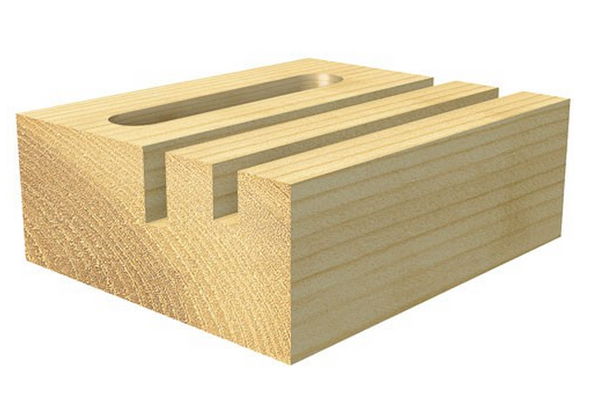 |
TrenchA trench, also called a "housing" or "dado", is a channel made across the grain of a piece of wood. Trenches can be cut with straight or spiral router cutters. |
|||
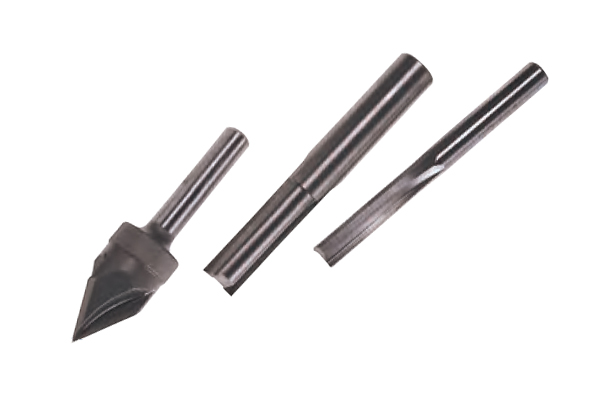 |
Tungsten carbide / tungsten carbide tip / tipped (TCT)Tungsten carbide is a metal found in a number of minerals, but chiefly in wolframite. It is used in a wide variety of cutting tools. Tungsten carbide tips are cutting faces normally brazed onto the bodies of routing or engineering tools. TCT tools are harder wearing than traditional carbon steel or HSS (high-speed steel) tools, and are best suited to man-made boards such as MDF. |
|||
U |
||||
 |
Up-cut shearA router cutter with an "up-cut shear" has its cutting edges inclined slightly so that they lift waste material up and out of the cut. |
|||
V |
||||
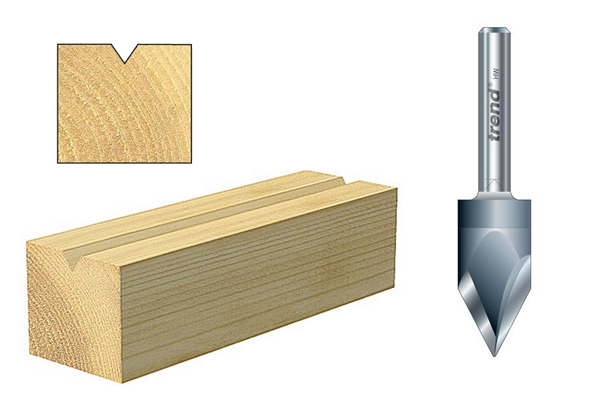 |
VeinerA veiner is a router cutter with a very fine point used for veining work. Veiners are also called "veining cutters". |
|||
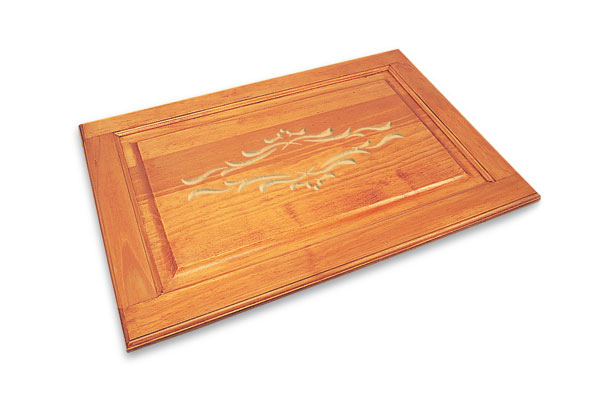 |
VeiningThe terms "veining" and "engraving" are typically used interchangeably, but they do in fact mean different things. While engraving involves routing lettering, wording or decorative shapes, veining refers to a series of thin, often shallow lines, usually found on stair spindles. There are cutters designed for veining work, but these can also be used for engraving and vice versa. |
|||
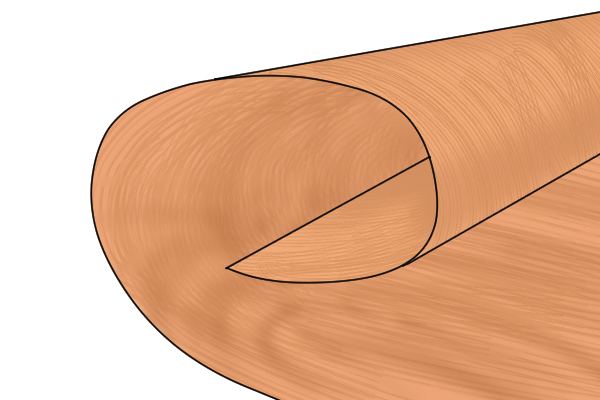 |
VeneerA veneer is a thin sheet or layer of sliced wood, glued or bonded to a surface (usually man-made board), to provide a decorative covering. Certain types of trimming bit are designed to trim excess veneer so that it lies flush with the board beneath it. |
|||
W |
||||
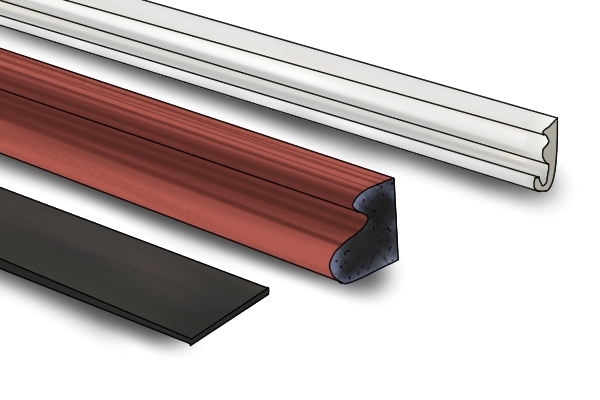 |
Weatherseal stripsWeatherseal strips usually come in the form of narrow pieces of material designed to fit between a door or window and its frame. They stop dust, moisture, insects and draughts from entering when the window or door is closed, and help to conserve energy by keeping warm air from escaping. There are router cutters designed to produce the recesses for these strips. |
|||
 |
Weight pocketA weight pocket is a small square section of timber cut into the lining of a box sash window to allow access to the sash weights. Straight two fluted router cutters are often used to cut the stopped grooves for weight pockets. |
|||
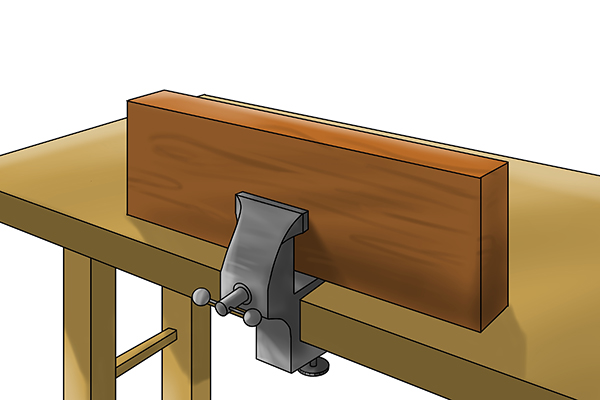 |
WorkpieceThe workpiece is the board or component which is to be worked, machined, drilled, sanded, or routed. |
|||
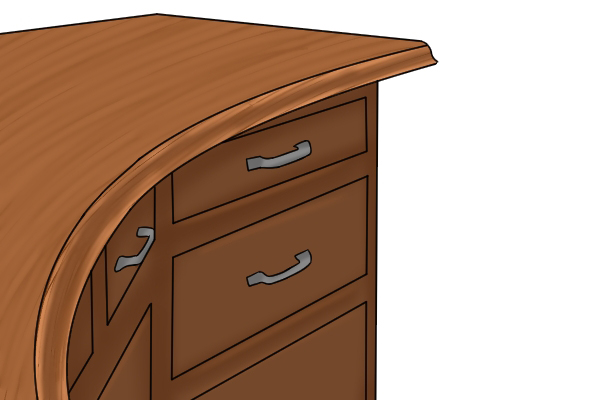 |
WorktopThe worktop is the surface of a table. In routing, the term "worktop" often refers to a kitchen worktop specifically. Sometimes, this is known as a post formed worktop due to the curved edge. Special jigs are available for routing kitchen worktops to ensure a seamless joint. |
|||
 |
||||








